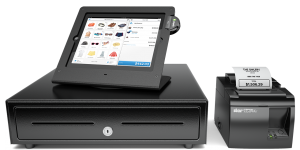The Creative Cloud Rises
Ajit Deshpande - September 24, 2013 - 0 Comments
 Back in May’13, Adobe, one of the few remaining bastions for packaged enterprise software, had announced that it would stop offering its Creative Suite (which includes products such as Photoshop, Illustrator and Acrobat amongst others) by the end of this year. The company announced at the time that it was doubling down on Creative Cloud, a service that offered users the same products via a monthly subscription. Well, last week, Adobe announced the results for its latest quarter, which showed that Creative Cloud had more than 1 million subscribers and annual recurring revenues of $546 million, representing an approx. 50% quarter-over-quarter increase in its cloud user base. The packaged software Creative Suite has in the past represented approximately half of Adobe’s $4 billion annual revenues, or $2 billion. Thus Creative Cloud is still only a quarter of its packaged software predecessor, but with a strong growth rate.
Back in May’13, Adobe, one of the few remaining bastions for packaged enterprise software, had announced that it would stop offering its Creative Suite (which includes products such as Photoshop, Illustrator and Acrobat amongst others) by the end of this year. The company announced at the time that it was doubling down on Creative Cloud, a service that offered users the same products via a monthly subscription. Well, last week, Adobe announced the results for its latest quarter, which showed that Creative Cloud had more than 1 million subscribers and annual recurring revenues of $546 million, representing an approx. 50% quarter-over-quarter increase in its cloud user base. The packaged software Creative Suite has in the past represented approximately half of Adobe’s $4 billion annual revenues, or $2 billion. Thus Creative Cloud is still only a quarter of its packaged software predecessor, but with a strong growth rate.
Adobe’s decision to rapidly move away from packaged software and into the cloud was quite a gutsy one, since it was undertaking this transition for nothing less than its flagship product. Aside from Microsoft, Adobe had been the flag-bearer for packaged software sales, but to the company’s credit, its understanding of its user-base’s pulse was correct, and adoption of Creative Cloud has been rapid. Furthermore, the move to the cloud is enabling Adobe to understand its user-base in ways it couldn’t before. The company can now fine-tune pricing tiers and application bundles to optimize its revenues around consumer willingness to pay. Also, by including 20 GB of storage with the SaaS offering, Adobe now gets to segment its subscribers around usage levels and use-cases, gaining insights that it never may have had before. All this paves the way for Adobe to truly own the large designer community that it is the lifeblood for, and all while simplifying feature-control and customer-support operations for the company.
During a week when another ex-behemoth Blackberry was in the news for the wrong reasons, it was refreshing to see Adobe achieve partial success as it embraces the cloud business model for its flagship product. Looking forward to a world where Photoshop for the masses becomes a reality, if only for the reason that there is a creative person within every one of us!


